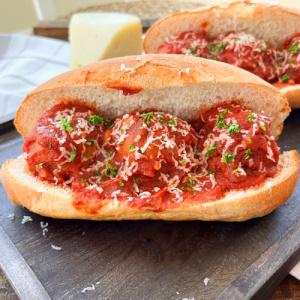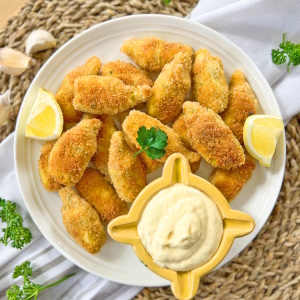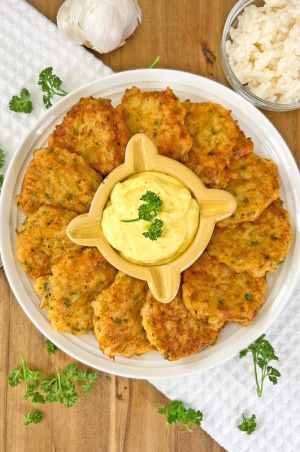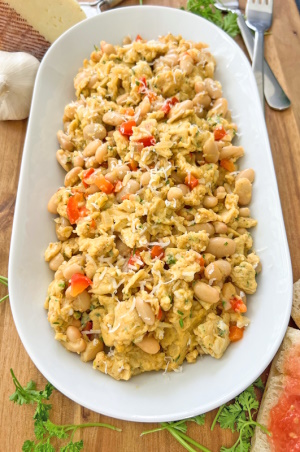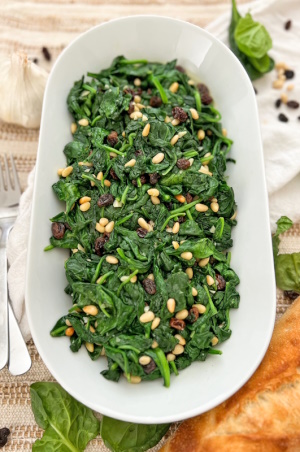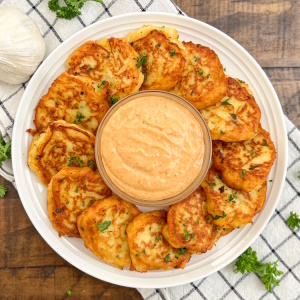From Albert Bevia:
This Vegetarian Meatball Sub is the ULTIMATE vegetarian sandwich. It’s
packed with flavors, made with heart-healthy ingredients and promises to
fill your body with so much goodness. Serve it next to a garden salad
and a bottle of Spanish wine for a delicious meal.
TIPS & TRICKS to make this Recipe: Important to squeeze the meatball mixture in your hands before shaping the meatballs. This will ensure that all the ingredients are well binded together, so the meatballs don’t fall apart when cooking.
The ULTIMATE Vegetarian Meatball Sub
Watch Albert preparing this recipe: https://www.youtube.com/watch?v=zn8JcTfMUwc
Ingredients
FOR THE VEGETARIAN MEATBALLS
- 1 can chickpeas (garbanzo beans) 15.5 oz / 440 grams
- 1/3 cup plain bread crumbs 40 grams
- 1 large egg
- 1 shallot finely chopped
- 1 clove garlic finely minced
- 1 small carrot (peeled)
- 2 tbsp chopped fresh parsley 8 grams
- 1/2 tsp ground cumin 1.5 grams
- sea salt & black pepper
FOR THE TOMATO SAUCE
- 3 cloves garlic
- 1 tsp sweet smoked Spanish paprika 2.50 grams
- 1/2 tsp dried thyme .50 grams
- 1 can tomato sauce (passata) 15 oz / 425 grams
- sea salt & black pepper
EXTRAS
- 1/4 cup extra virgin olive oil 60 ml
- 2 bread rolls
- grated cheese
- chopped fresh parsley
Instructions
- Drain the canned chickpeas into a colander and rinse under water, then shake off any excess water and transfer the chickpeas into a large bowl, using a potato masher or a large fork, push down on the chickpeas until they’re well mashed
- Once the chickpeas are mashed, add in the bread crumbs, crack in the egg, add in the shallot and garlic, finely grate in the carrot, add in the parsley, cumin and season with sea salt & black pepper, mix together, once well mixed, push down on the mixture until you get a paste-like texture
- To shape the meatballs, grab a large spoonful of the mixture and squeeze it in your hands, then shape into a ball, a little bigger than a golf ball
- Heat a large fry pan with a medium heat and add in the olive oil
- After a couple of minutes add in the chickpea meatballs, all in a single layer, fry for 7 to 8 minutes or until golden fried all around, then remove from the pan and set aside
- Using the same pan with the same heat make the tomato sauce, add in the minced garlic and mix continuously, after 15 seconds and the garlic is fragrant, add in the paprika and thyme, quickly mix together, then add in the canned tomato sauce and season with sea salt & black pepper, mix together, then add the chickpea meatballs back into the pan, gently flip each one so they’re coated in the sauce, lower the fire to a low heat
- In the meantime, cut the bread rolls in half lengthwise, without cutting them all the way through, add into a preheated oven for a few minutes so they lightly toast
- After simmering the chickpea meatballs for about 5 minutes and the tomato sauce has slightly thickened, remove the pan from the heat
- Add the chickpea
meatballs into the bread rolls, top off with the tomato sauce, then add
in some grated cheese and sprinkle with chopped parsley, enjoy!
